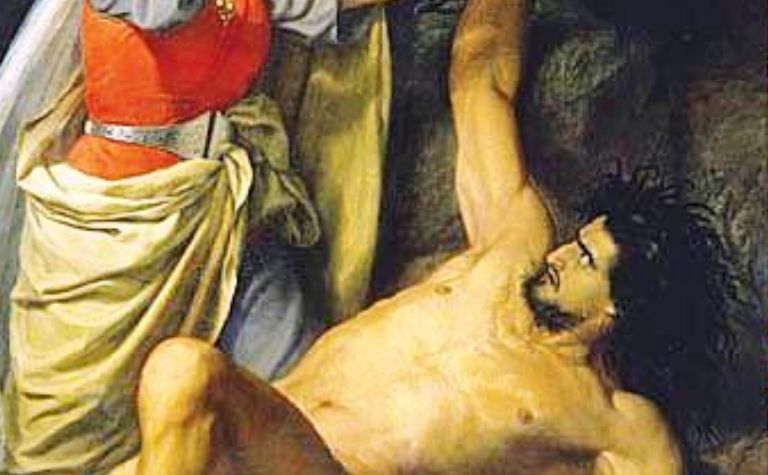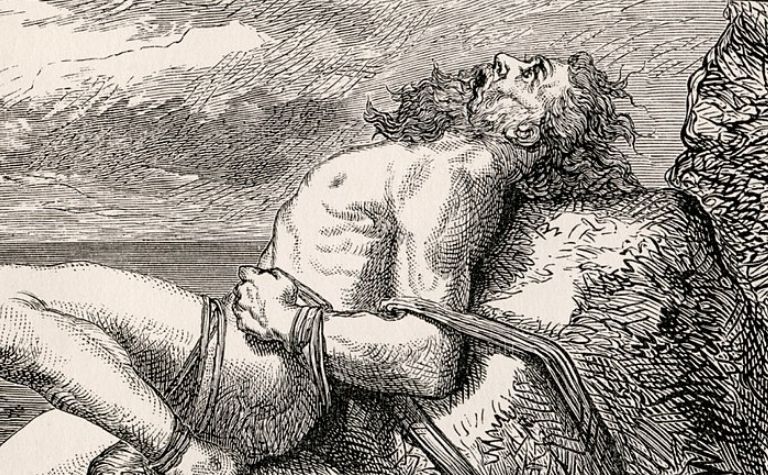Many people consider Loki to be one of the most intriguing figures in Norse mythology.
In recent years, fans of Marvel’s Avengers movies have been introduced to the Norse god, and they often wonder about how accurate that version of Loki is when compared to the mythology that inspired the movies.
One thing a lot of people want to know about is what Loki looked like according to the Norse myths.
Loki was handsome in appearance, according to Norse mythology.
His blond hair was one of his most notable features. Although some claim that Loki had red hair, there’s no literary evidence to support this.
The rest of this article describes the physical attributes of the Norse god of mischief, including their ability to transform.
Read on for more insights and a detailed description of some of the things the Marvel movies got wrong about this legend.
Also, see Is Loki a God or a Frost Giant in Norse Mythology? to learn more.

What Was the Color Loki’s Hair, Eyes, and in Norse Mythology?
Norse mythology doesn’t describe Loki’s hair, eyes, and skin color. The only description of the god of mischief is that he was handsome and blond.
In other words, the version of Loki in Marvel movies is probably a result of assumptions of how he may have looked or the result of artistic liberty on the part of the movie-makers.
Loki’s eyes changed from green in Thor to blue in The Avengers and back to green in Thor: The Dark World.
Could Loki Change His Looks in Norse Mythology?
Norse mythology describes Loki as a shapeshifter. He could change his appearance and shape at will, but he was most often described as a handsome man with long blond hair.
There are several instances where Loki shifts his shape between human and animal forms in Norse mythology.
For example, to evade Asgard’s watchmen, he turned himself into a salmon and hid among the fish swimming upstream.
The god of mischief also had a much smaller, slimmer form known as the Sly One.
This was his true shape, and in this guise, he would not have been recognized by any of the gods or goddesses who knew him well.
In one legend, he changed himself to look like a mare and gave birth to Sleipnir, Odin’s eight-legged horse.
Therefore, Loki in the Norse myths could change his form and had the power to reproduce in whichever form he took.
Another story tells of two dwarves trading their weight for another man’s freedom.
Notably, Loki changed them all so that neither side would know which dwarf weighed more than the other.
He also sometimes changed shapes when hunting or traveling incognito.
Also, see How Did Loki Become a God in Norse Mythology? to learn more.

How Accurate Is the Loki Character in Marvel Movies?
The Loki character in Marvel movies is an inaccurate representation of Loki in Norse mythology.
Although the Norse and Marvel versions of Loki are both tricksters and shapeshifters, the latter is portrayed as Odin’s stepson, a villain right from the start, and one who never had a wife and children.
Here is a breakdown of the differences between Marvel and Norse Loki:
Loki’s Parents
In Norse mythology, Loki is the son of two giants. His mother is Laufey, and his father’s name is Farbauti.
In Marvel movies, the trickster god was adopted by Odin from Jotunheim (land of the Giants).
According to the Marvel Universe, Odin once fought the Frost Giants.
After defeating them, he found an abandoned baby and took him home to Asgard. That baby was Loki.
Marvel movies portray Loki as Thor’s step-brother and Odin as his father.
Their relationship is strained and full of hatred because Loki is always insecure, thanks to Thor’s fiercer and wild nature, qualities that the Asgardians (the Marvel version) expected from a King.
Loki’s Wife and Children
Another difference between Marvel and Norse Loki is that the former doesn’t have any clear descendants.
On the other hand, the latter has a wife named Sigyn and two children: Narvi and Vali (both are mentioned in the Voluspa).
Loki’s other children in Norse mythology include Fenrir the wolf, Jormungand the serpent, and Hel. These children were born with a woman named Angrboda.
In Marvel movies, Loki has no children and is never shown to love any particular female character.
Shapeshifting
The Norse version of Loki is a shapeshifter. He only uses illusions to create new shapes for himself in Marvel movies.
The Norse version of Loki sometimes takes the form of animals, such as a mare or a seal. Besides, Norse Loki could change his shape into various animals to visit other gods’ realms undetected.
In one myth, Loki was traveling around Midgard and Jotunheim (land of the Giants) on behalf of Odin to avoid being detected by any giants who lived there since they had been banished from Asgard long ago.
The Marvel version of Loki also shifts shape, although he only shapeshifts to other humans and gods, such as Captain America and Odin, respectively.
Also, see Who Are Loki’s Children in Norse Mythology? to learn more.
Loki as a Villain
Marvel portrays Loki as a villain. He is always looking for ways to help himself and hurt others.
Norse Loki, on the other hand, could be a good person from time to time and is often described as Odin and Thor’s companion and helper.
This version also helped create the Mjolnir; the hammer Thor is often seen using in Marvel movies.
Loki also helped Odin fight against Surtur, a fire giant. Surtur wanted to destroy Asgard with his flaming sword that was eternally sharp.
However, in Norse mythology, Loki acts like a villain when he tricks Höd, the blind god, into killing Baldr (Odin’s son). This happens towards the end of his narrative as opposed to at the beginning.
In contrast, the Marvel version of the trickster god’s main goal (aside from overthrowing Odin and taking over as king) is killing Thor.
Another aspect that shows the differences in the villainous natures of Marvel and Norse Loki is the ultimate consequence of their actions.
Notably, the latter does more catastrophic deeds, such as his role in the death of Baldr.
Specifically, Loki’s act of tricking Höd marks the beginning of Ragnarok.
Loki in the Marvel Universe is a significant deviation from the original Norse god of mischief.
